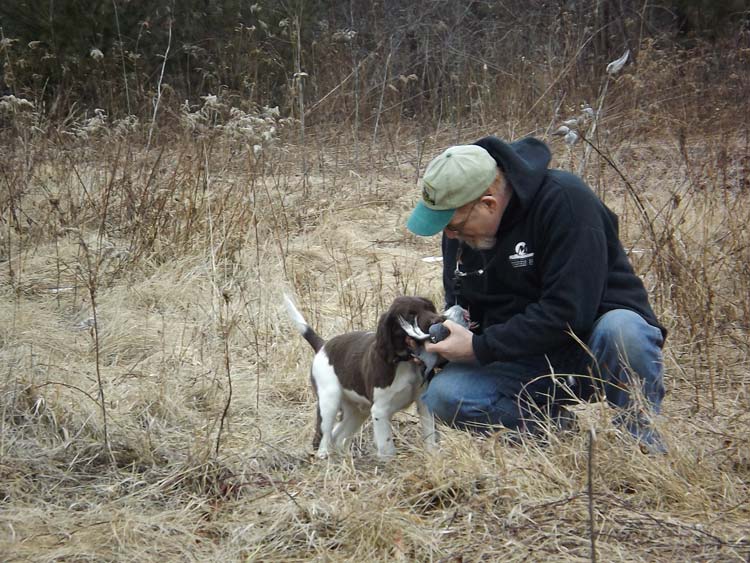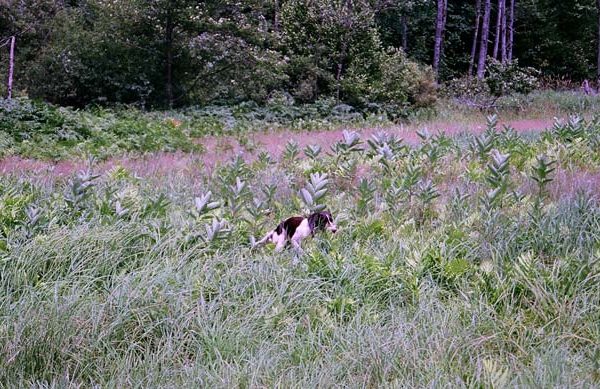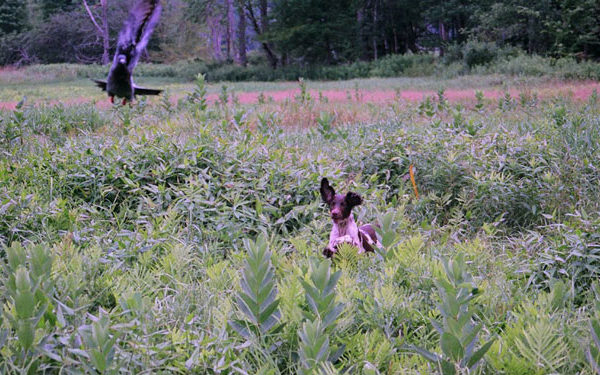
Animal behaviorists have written volumes about the social development of a canine and generally agree that puppies should be removed from their littermates at 7 weeks old. It’s from that point on that man begins tinkering with “Mother Nature”. Often a 7 to 8 weeks old puppy will go to their new home and be thrown into situations he may not be ready for. Eager new owners often let the excitement of owning a well-bred gun dog get the better of them.
Reputable breeders recognize this fact and constantly modify their breeding program to produce faster and faster maturing canines. Despite professional breeders best efforts, one thing remains the same, dogs mature at different rates and the environment a dog is raised in can often be the difference between a top-notch gun dog and a “pot-licker”.
I will be the first to admit that having a puppy that’s a sponge at 8-12 weeks old and absorbs everything you throw at it is exciting. However, this is often little, if any, indication to how well the dog will do when he matures.
During the past 15 years, I have been amazed with the wide range and level of training that dogs come to our facility with. I have seen both ends of the spectrum. In some cases, I have seen owners bring dogs in that barely even know their names. When questioned as to how much training their dog has received they sheepishly answer, “None, I didn’t want to ruin him before he came in for training.” At the other extreme, I have seen owners bring young spaniels in where they have applied so much control on the dog that he becomes very mechanical. Both of these situations are equally troublesome and can be avoided by applying a few simple principles.
At a young age, “Here” is probably the simplest command you can teach. It Principle number one, “Mother Nature” does not bless all dogs equally when it comes to ability or rate of maturity.
As a professional breeder, I place a high importance on how biddable dogs are. After years of being around spaniels, it has become easy to spot dogs that exhibit a high desire to please. Finding that balance between “willingness to please” and independence is what most professionals look for. Willingness to please is a trait that is passed on through genetics and fostered throughout the “bonding process” that takes place when you get your new puppy.
At a young age you should begin to introduce your gun dog to as many new elements as possible. Trips to the country fairs, the local park, public places, kids and other people will build a solid foundation on which the rest of his life will be built. Take walks in the field alone with your new companion. After a short time, he will become accustomed to the cover, wind and new scents. Leave the whistle at home for the first few trips in the field, you just want that little sponge to soak-up everything. The trust and confidence your pup will have in you during this process will also bring the two of you closer together. Watch the way he reacts to new things, but be sure not to coddle him too much. He will show you, through body language, how he sees the world. Make adjustment, you want him to learn there is a big world out there and he is part of it.
Principle number two, a puppy begins learning from the moment the puppy is born. The mother quickly teaches a puppy many life skills in and out of the whelping box. Then as the puppy grows older, his siblings begin to teach him social order lessons. However, we don’t want the social order of the whelping box to be engrained too heavily into the puppy before going home to his new owners, so we remove the puppy from his littermates at 7 weeks old.
Proper introduction to birds is often better left to a professional trainer. Once with his new family, the social order is established once again. It’s at this point you assume the role of “Alpha” dog and teach him how to be a good citizen. By establishing consistent rules and holding a high standard, young dogs will quickly understand what is acceptable and unacceptable. This applies in the home as well as in the field. It is not fair to the young spaniel to be allowed to get away with one behavior one day and not the next. If this is allowed to happen, a dog can quickly get confused and this will set you back days or sometimes weeks in training.
Simple obedience of “No”, “Here” and “Hup” can be started as early as 8 weeks old. Give yourself and the new pup the first week to get accustomed to the new surroundings. At such a young age, “Here” is probably the simplest command you can teach. It’s only when the dog gets older and more independent that the command “Here” becomes more difficult.
Principle number three, gun dog training books are wrong! Well not really, but often gun dog training books spell out a timeline that may or may not apply to the maturity rate of your spaniel. Some dogs will be able to learn multiple concepts at the same time while others will not. The role of the trainer, when teaching a young dog a concept, is to read how well he comprehends the lesson and adjust your program accordingly. Again, this is where the gun dog training books are defunct. No book can teach you to “read a dog”, only years of practice will help you master such a skill. Additionally, books typically only give you a single approach to train your spaniel and if that doesn’t work, well you get the idea. By establishing a solid relationship built on trust, you will find it possible to communicate with your canine beyond the spoken word, which will pay large dividends in the end.
Principle number four, you should see some sign of maturity before entering into any type of structured training program. It’s not uncommon for an immature pup to be distracted quickly by other things that are going on around him. Many young dogs are incapable of maintaining any form of eye contact with the trainer for more than a second or two. Others will allow their minds to drift off while in the midst of doing a retrieve and will start to veer off line towards something else that seems to be more attractive to them. Every pup will come into it’s own, at his own pace. Rest assured, if the breeding is there, one day you will notice that you have his full attention during your sessions and he will be ready to take on the challenge of structured training.
So, what is too young to me? Too young is pushing that puppy into concepts he is not ready for. Often, training manuals and canine behaviorist studies are great sources of information, but terribly deceptive when it comes to what your puppy is ready for. Remember, “nature” will only take you so far. Nurture that puppy and take your time and above all be patient while you wait for the light to go on. Work on the basic concepts like obedience, socialization, and simple retrieving. Keep your standards high and be consistent with the message you are sending to your young dog, and have fun!




